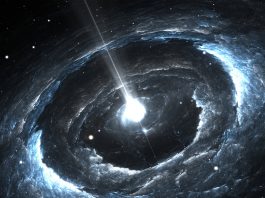CERN’s Antimatter Factory has opened up new possibilities in the search for cold dark matter by setting new limits on the existence of axion-like particles.
In a new paper, published by Physical Review Letters, researchers working on the Baryon Antibaryon Symmetry Experiment (BASE) at CERN’s Antimatter Factory describe a pioneering method of turning particles with a narrow mass range (around 2.97 neV) into photons, opening up new experimental possibilities in the search for cold dark matter.
Axions, or axion-like particles, are candidates for cold dark matter. From astrophysical observations, CERN believe that around 27% of the matter-energy content of the universe is made up of dark matter. These unknown particles feel the force of gravity, but they barely respond to the other fundamental forces, if they experience them at all. The best accepted theory of fundamental forces and particles, called the Standard Model of particle physics, does not contain any particles that have the right properties to be cold dark matter. The result reported by BASE investigates this hypothetical dark matter background present throughout the Universe.
The Standard Model leaves many questions unanswered, therefore physicists have proposed theories that go beyond it, some of which explain the nature of dark matter. Among these theories is the existence of axions particles. For the first time, BASE has tuned the tools developed to detect single antiprotons, the antimatter equivalent of a proton, to the search for dark matter. This is especially significant as BASE was not designed for such studies.
Jack Devlin, a CERN research fellow working on the experiment, said: “BASE has extremely sensitive detection systems to study the properties of single trapped antiprotons. These detectors can also be used to search for signals of particles other than those produced by antiprotons in traps. In this work, we used one of our detectors as an antenna to search for a new type of axion-like particles.”
The BASE team looked for unexpected electrical signals in their sensitive antiproton detectors. At the heart of each detector is a small, approximately 4cm in diameter, donut-shaped coil of superconducting wire, which looks similar to the inductors you often find in ordinary electronics. However, the BASE detectors are superconducting and have almost no electrical resistance, and all the surrounding components are carefully chosen so that they do not cause electrical losses. This makes the BASE detectors extremely sensitive to small electric fields. The detectors are located in the Penning trap’s strong magnetic field; axions from the dark matter background would interact with this magnetic field and turn into photons, which can then be detected.
BASE opens up possibilities for other Penning trap experiments to participate in the search for cold dark matter. Since BASE was not built to look for these signals, several changes could be made to increase the sensitivity and bandwidth of the experiment and improve the probability of finding an axion-like particle in the future.









